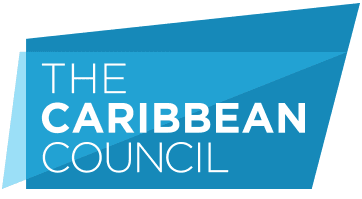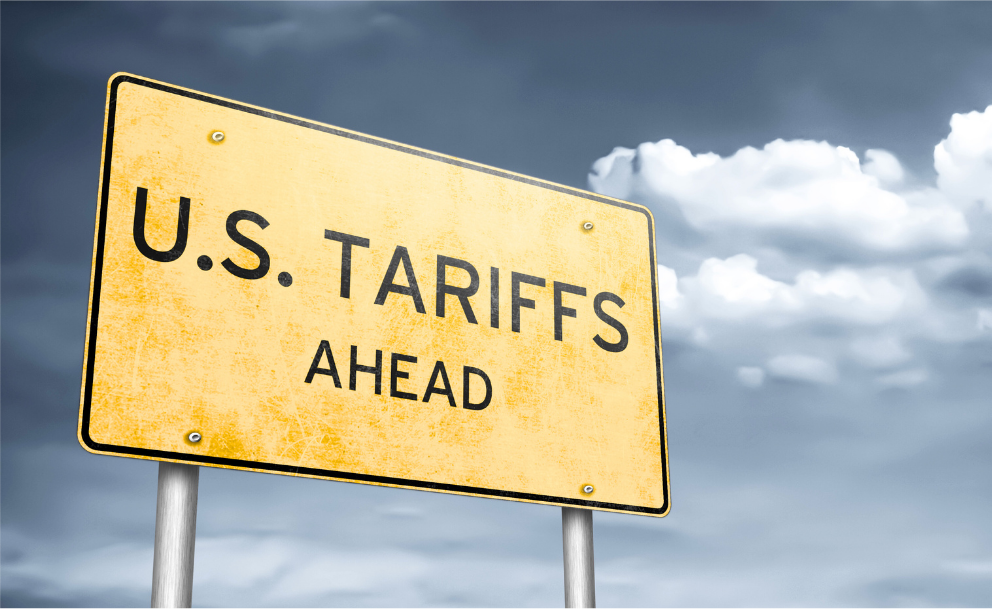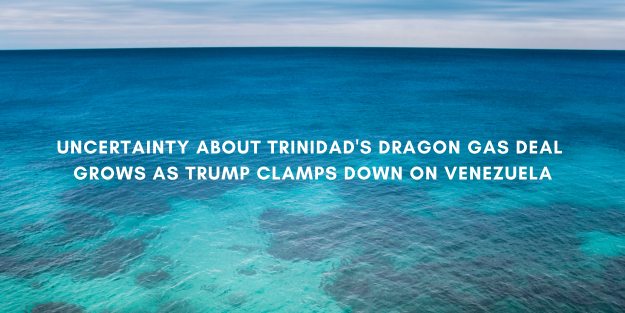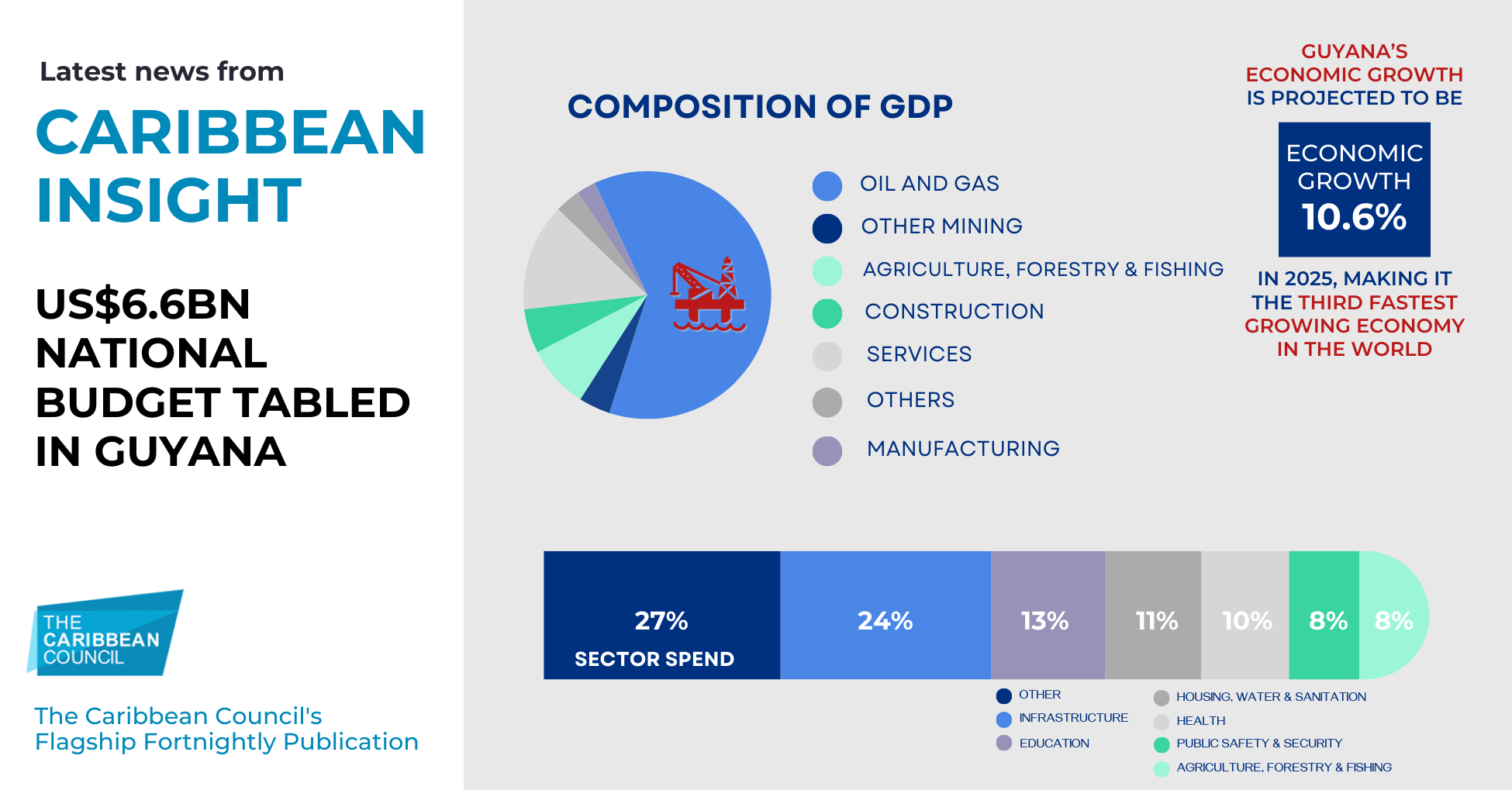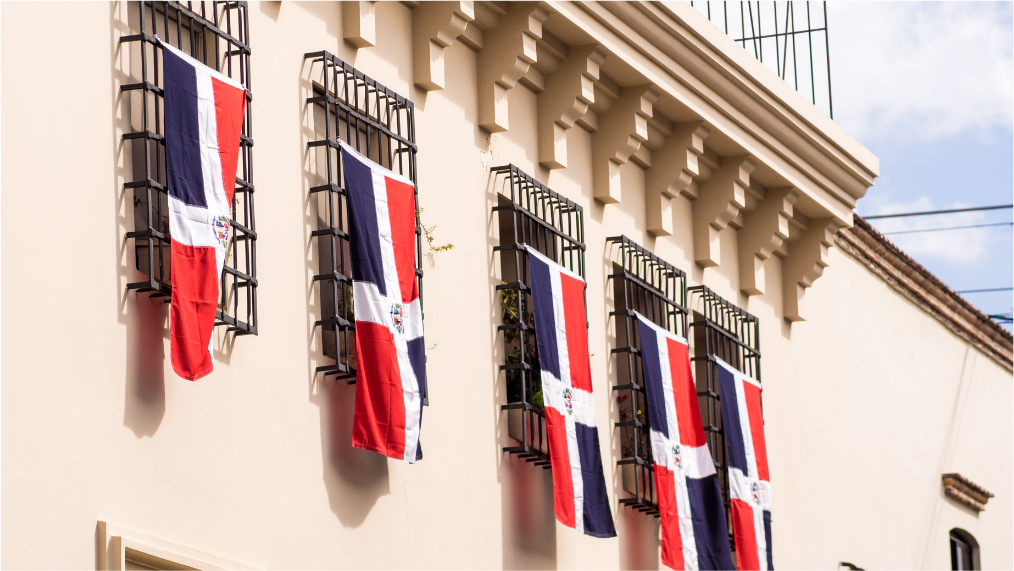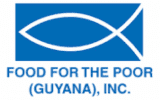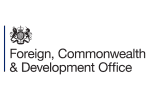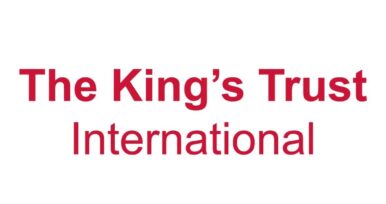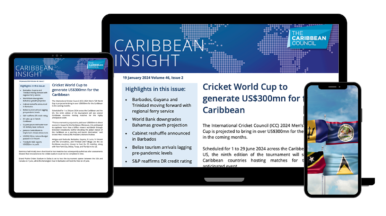Caribbean Insight
The Caribbean Council's Flagship Fortnightly Publication
Caribbean Insight is The Caribbean Council’s flagship fortnightly publication. Our comprehensive publication offers the latest in news, analysing business and political developments across the region.
From The Bahamas to French Guiana, each edition consists of a country-by-country analysis of the leading news stories of consequence, distilling developments across the Caribbean into a single must-read publication. Each edition contains two leading articles providing in-depth analysis of topical political, economic and developmental issues in the region.
Don’t miss out on the latest news business and opportunities from the region. Subscribe to receive the Caribbean Insight Publication directly to your inbox. Caribbean Insight Subscribers receive 23 editions over 12 months. Click to Subscribe.
Interested in seeing a sample edition of Caribbean Insight? Follow the link.
Lead Articles Featured on Caribbean Insight
21 March 2025
Several Caribbean countries are breathing a bit easier after the US disputed reports that it is considering implementing new travel restrictions that could affect six Caribbean nations—St Lucia, Antigua and Barbuda, Dominica, St Kitts and Nevis, Haiti and Cuba.
According to the The New York Times, countries have been categorised into three levels of restrictions: a “red” list, where travel would be completely banned; an “orange” list, which would impose severe visa restrictions; and a “yellow” list, where nations have been given 60 days to address specific security concerns or face possible escalation to the other two categories.
St Lucia, Antigua and Barbuda, Dominica, and St Kitts and Nevis allegedy fell under the “yellow” list, while Cuba has been placed in the “red” category, alongside Venezuela.
The Times noted that the categorisation was based on concerns about “inadequate security practices for issuing passports, insufficient information-sharing on travelers, or the selling of citizenship to people from banned countries”.
Each of the four Eastern Caribbean nations on the yellow list operates a Citizenship by Investment (CBI) programme, which allows foreign nationals to acquire passports in exchange for financial investment. The US has raised concerns that such programmes could be exploited to bypass existing travel restrictions.
Caribbean governments were quick to seek clarification on these potential restrictions. St Lucia’s Prime Minister Philip Pierre stated that his administration had received no official communication from the US regarding the country’s inclusion on the list.
“The Government of St Lucia and the St Lucian Embassy in Washington DC are actively seeking clarification on this matter… The USA is a friend of St Lucia and remains a key partner in St Lucia’s development. We look forward to an even stronger relationship between our two countries,” said the Prime Minister’s office in a statement.
Similarly, Antigua and Barbuda’s Prime Minister Gaston Browne instructed his Ambassador to the US, Ronald Sanders to send a diplomatic note to the US State Department. Browne voiced his discontent, asserting that “there is no objective justification for Antigua and Barbuda to be placed on a list that could hinder the travel of its citizens”.
The Government of St Kitts and Nevis stressed its commitment to resolving any concerns related to its CBI programme. “Since August 2022, we have maintained open dialogue with the US government, particularly regarding reforms to our CBI programme,” a statement from the government read.
Meanwhile, Cuba’s alledged inclusion in the “red” category means that its citizens could face a complete ban from entering the US. Given the longstanding strained relations between Washington and Havana, the move comes as no surprise. The Times report suggests that the Trump Administration views Cuba and Venezuela as “long-standing adversaries of US foreign policy.”
The rumured restrictions would reflect a significant expansion of travel bans imposed during President Donald Trump’s first term. The initial bans, which primarily targeted Muslim-majority countries, were challenged in courts but ultimately upheld by the US Supreme Court. President Joe Biden revoked those bans in 2021, but with Trump back in office, his administration argues that reinstating and expanding the policy is necessary.
The Trump administration have justified the travel restrictions as measures designed to protect American citizens from “aliens who intend to commit terrorist attacks, threaten our national security, espouse hateful ideology or otherwise exploit the immigration laws for malevolent purposes”.
This approach has drawn criticism, as many of the countries affected by these proposed restrictions are small, developing nations. Kevin Hosam, Founder and Chairman of EC Holdings, raised concerns about the criteria used to select countries for these lists.
“It’s puzzling that Grenada, which also operates a CBI programme, is absent from these reports,” he said, adding that “this inconsistency raises questions about the rationale being used for these designations”. He also called for clarity on the lists; noting discrepancies between different reports with some countries listed in the New York Times article missing from Reuter’s report.
“Well, first of all, there is no list. What people are looking at over these last several days is not a list that exists here that is being acted on. There is a review, as we know through the president’s executive order, for us to look at the nature of what’s gonna help keep America safer when dealing with the issue of visas and who’s allowed into the country,” said US State Department spokesperson, Tammy Bruce.
“So, that’s not something that is – certainly I can talk about regarding something that doesn’t exist, but certainly when that review is done, we’ll have something that we can discuss,” said Bruce.
While the final decision rests with the White House, sources within the State Department suggest that the lists could still be developed along the line reported.
As the review unfolds, Caribbean governments are hoping to avoid travel restrictions that could significantly impact tourism, business, and diplomatic relations.
For now, affected nations must wait as the Trump Administration finalises its latest immigration policy adjustments. Given the region’s reliance on US travel for business, tourism, and familial ties, the coming weeks and months will be critical in determining whether any changes would target the Caribbean.
Source: Caribbean Insight – Volume 47, Issue 6
04 April 2025
Only days after US Secretary of State Marco Rubio’s tour of the Caribbean, President Donald Trump has created another powder keg when he announced sweeping global tariffs on countries including those in the region.
Trump’s 1 April executive order imposed a blanket 10% tariff on most Caribbean countries, while in the case of Guyana, the tariff is as high as 38% according to the White House website. The new tariffs are being justified under the International Emergency Economic Powers Act (IEEPA) and framed as a response to “non-reciprocal” trade relationships.
The move has rattled CARICOM, where around 40% of exports—such as petroleum, agriculture, and manufactured goods—are shipped to the US. Barbados Prime Minister Mia Mottley described the policy as “a blindsiding blow to our economic stability,” while Trinidad and Tobago’s LNG sector began evaluating its impact on US competitiveness. Regional consumers may face rising prices for US imports like food, worsening inflation.
“The government of Guyana has taken note of the reciprocal tariffs announced by the US Government… our Government is closely engaged with our US partners to better understand the issue and have it addressed as appropriate,” said Guyana’s Finance Minister Ashni Singh.
CARICOM currently imposes tariffs on US products under its Common External Tariff, ranging from 0–20% on industrial goods and up to 40% on agriculture. The situation has raised fears of economic instability across the Caribbean and marked a potential turning point in US–CARICOM trade relations.
Days earlier, Secretary Rubio completed a largely positive tour of the region where the Trump Administration’s foreign policy was on the agenda, as regional leaders sought to directly address a range of thorny issues at the heart of recent geopolitical tensions.
His meetings in Jamaica, Guyana, and Suriname underscored a sharp focus on trade, the Cuban medical programme, energy security, organised crime, migration, and the deepening rivalries with China and Venezuela.
Rubio’s meeting with Prime Minister Andrew Holness in Jamaica tackled multiple high-stakes issues, including the controversial US travel advisory that urges Americans to “reconsider” travel to Jamaica due to crime.
“We’re going to go back and reevaluate the travel advisories as they currently stand to ensure that they do reflect the reality of the new numbers,” Rubio said, acknowledging that Jamaica has “made very impressive progress” in general numbers overall when it comes to the murder rate.
Much of the spotlight in Jamaica was on the Cuban medical programme, which the Trump Administration views as exploitative.
“We have no problem with medical assistance and we don’t have a problem with doctors. We have a problem… how it’s operated around the world… It’s not that they’re Cuban doctors, it’s that the regime does not pay these doctors, takes away their passports, and basically it is in many ways forced labour, and that we cannot be in support of,” said Secretary Rubio, attempting to clarify the US position.
However, Holness responded strongly in defense of the programme and Jamaica’s handling of Cuban doctors. “Let us be clear, the Cuban doctors in Jamaica have been incredibly helpful to us. We ensure that they are treated within our labour laws and benefit like any other worker,” said the Prime Minister.
Barbados Prime Minister Mia Mottley took the opportunity to directly raise alarms about a proposed US tariff on Chinese-built ships that could increase shipping costs dramatically.
“What we potentially face with the announced cess—levy, whatever you want to call it—on ships made in China will have serious and deleterious consequences for the commerce not just of Barbados, not just of the Caribbean, but also for Florida,” Mottley warned. She estimated that such a tariff could add between US$1,500 to US$4,000 to the cost of importing a single container.
Mottley urged the US to exempt Caribbean nations from the policy and wrote directly to President Trump in her capacity as CARICOM Chairman. Rubio offered only cautious reassurance: “Rest assured we will take that message back,” while defending the administration’s broader trade stance as an effort “to reset global trade in a way that’s fair to the US.”
Rubio and Mottley also discussed the US-Barbados partnership under the Caribbean Basin Security Initiative. According to a State Department spokesperson, the two leaders focused on “tackling illicit narcotics and firearms trafficking, dismantling organised crime networks, and strengthening regional security coordination.”
Talks with recently sworn in Trinidadian Prime Minister, Stuart Young focused on energy cooperation and border security. Young said he received assurances that “the US will not harm Trinidad and Tobago,” particularly in relation to the Dragon Gas Deal with Venezuela. Rubio was reportedly receptive, with Young adding, “We are moving full speed ahead.”
The pair also discussed the US designation of Venezuelan gang Tren de Aragua as a Foreign Terrorist Organisation. Rubio called on Caribbean nations to join the effort to dismantle such networks, noting, “Many of the guns and the weapons that are being used by gangs to commit acts of violence here in Jamaica are purchased in the US and then shipped here and we want to commit to doing more to stopping that flow.”
Security concerns reached a peak in Guyana, where Rubio issued a stern warning to Venezuelan President Nicolás Maduro over territorial claims on Guyanese land. “There will be consequences for aggressive action,” Rubio declared. “We have a big navy, and it can get almost anywhere.”
Guyanese President Irfaan Ali welcomed the firm stance, saying, “I’m very pleased at the reassurance of the US, ensuring the safeguard of our territorial integrity and sovereignty.” The US and Guyana also signed a new security memorandum targeting narco-trafficking, smuggling, and human trafficking.
Rubio did not hold back on his criticism of China either, referencing poor-quality infrastructure projects. “We almost all had concussions because the road was so bad – it was terrible,” he said of a Chinese-built road in Guyana. “They bring their workers. They don’t hire you.”
China’s mission in Guyana fired back, accusing the US of making “baseless accusations” and trying to “drive a wedge” between China, the Caribbean and Latin American countries.
The past few weeks in US-Caribbean relations have shown that while Rubio’s Caribbean tour may reflect the Trump Administration’s deeper engagement with the region as it seeks to push back against Chinese and Venezuelan influence, it is clear that the region may not be spared in the US’ push to rebalance its trade with the rest of the word.
Source: Caribbean Insight – Volume 47, Issue 7
18 April 2025
The US has revoked key licences that enabled Trinidad and Tobago to pursue joint natural gas projects with Venezuela, in a move that has sent shockwaves through the nation’s energy sector and raised questions about its economic future.
Prime Minister Stuart Young confirmed the revocation of the Office of Foreign Assets Control (OFAC) licences for the Dragon and Cocuina-Manakin gas fields during a sombre press conference at Whitehall on 8 April.
“We have now been informed that our licence from OFAC, which is dated 18 December 2023, has been revoked by OFAC, as well as our Manakin-Cocuina licence,” said Young.
The licences had allowed multinational energy giants Shell and BP, along with Trinidad’s state-owned National Gas Company, to develop offshore gas fields near the Venezuelan maritime border. The Dragon field alone holds an estimated 4tn cubic feet of gas, with first exports initially slated for 2026.
These projects were seen as critical to reversing Trinidad’s declining gas output and maintaining its status as Latin America’s largest liquefied natural gas (LNG) exporter.
However, the Trump Administration’s broader rollback of an ease in Venezuelan sanctions has left the Caribbean nation scrambling for alternatives. “It prevents payment at this stage to the Venezuelan Government. We are going to continue doing the work,” Young said, adding that companies have until 27 May to wind down operations.
Trinidad had already begun paying over US$1mn per year in taxes to Venezuela for the expected 20-year Dragon project. But the move by Washington, citing concerns over Venezuela’s failure to restore democratic norms and manage illegal migration, has effectively frozen the deal.
Young made it clear that his government is not giving up. He has already contacted Washington-based attorneys to explore options for a legal response. “There is a process for, I wouldn’t say appeal of this revocation, but for you to make an application for it not to be, or for there to be amendments. We are going to be engaging that process on behalf of Trinidad and Tobago,” he said.
Young has also reached out to key US officials, including Special Envoy for Latin America Mauricio Claver-Carone and Secretary of State Marco Rubio. “I expect that we will be given an audience. I expect that we will be given the opportunity to continue to make our case,” said Young.
The Prime Minister stressed that the US had earlier assured him the move was not intended to harm Trinidad and Tobago. “Secretary of State Rubio told me, ‘Stuart, in this thing there are many ways and times can change, but don’t worry, we’re not going to harm Trinidad and Tobago,’” he shared.
Nonetheless, opposition politicians have seized on the setback. David Lee, shadow energy minister for the United National Congress (UNC), criticised the government’s overreliance on Venezuela. “You had placed all your eggs in the basket of the Maduro government… We told them so,” said Lee during a campaign walkabout in Preysal.
UNC’s Sean Sobers was even more direct. “What we said is we had a problem with Maduro, dealing with the Venezuelan administration, and that it would be a geopolitical nightmare to place Trinidad and Tobago’s future in one basket.”
Economists and energy experts have echoed concerns. “This means short to medium term disaster for the economy as it spells the continued contraction of the energy sector,“ warned Dr Indera Sagewan in an interview with the Guardian Newspaper, adding that “we knew a Trump administration would spell bad news for this deal.”
Energy expert Tony Paul noted that while the situation is grim, opportunities remain within Trinidad’s exclusive economic zone. “We can start by simply collecting the taxes due to us under existing law and closing major revenue loopholes,” said Paul.
From a fiscal perspective, the consequences are stark. Former Finance Minister Colm Imbert, in a sworn affidavit, admitted that without gas from Venezuela, the government would “soon be faced with very difficult choices in terms of maintaining the current levels of subsidies, grants, free services and social programmes.” The country’s ongoing foreign exchange problem is also a concern.
The Energy Chamber also urged a redirection of focus. “There are significant opportunities to develop natural gas fields within Trinidad and Tobago’s exclusive economic zone and these must also be pursued actively and urgently.”
Still, Young assured the population that all is not lost. “Plan B and Plan C and Plan D are already in play,” he said, highlighting the ongoing Manatee project and other domestic fields like Mento, Calypso, and Onyx.
“The good thing is they understand and have taken careful note of what it is Trinidad and Tobago can do,” Young added, referring to his discussions with US officials. “We will continue to fight for the ability and the opportunity to keep our energy sector whole.”
Yet, as Trinidad nears its 28 April general election, the political and economic implications of the revocations are expected to loom large over the national conversation and whether the ruling People’s National Movement (PNM) will be returned to power.
Source: Caribbean Insight – Volume 47, Issue 8
10 March 2025
The fate of Trinidad and Tobago’s highly anticipated Dragon gas deal with Venezuela has been thrown into uncertainty following a series of hardline measures by US President Donald Trump against the Maduro Administration.
The Trump administration’s recent policy reversals have cast doubt on whether the project, vital for Trinidad’s energy security and economic stability, can move forward as planned. On 26 February, President Trump announced the termination of a license granted under the Biden Administration that allowed US oil giant Chevron to operate in Venezuela.
“We are hereby reversing the concessions that crooked Joe Biden gave to Nicolás Maduro, of Venezuela, on the oil transaction agreement, dated 26 November 2022, and also having to do with electoral conditions within Venezuela, which have not been met by the Maduro regime,” said Trump on Truth Social.
Following Trump’s announcement, US Secretary of State Marco Rubio confirmed a broader crackdown on energy deals with Venezuela. “Today, pursuant to @POTUS directive, I am providing foreign policy guidance to terminate all Biden-era oil and gas licenses that have shamefully bankrolled the illegitimate Maduro regime,” said Rubio on social media.
Acting Prime Minister and Energy Minister Stuart Young admitted that the government could not guarantee the survival of the Dragon gas deal, which involves Trinidad’s National Gas Company (NGC) and multinational energy giant Shell.
“Can we provide any assurance at this stage? The answer is obviously no. Are we engaged with the right people, we believe? We think we are and we will continue to work, and at every step of the way, if there is something for us to report, we will,” said Young at a media briefing.
He added that Trinidad remains in contact with US Embassy officials, Shell, and BP to assess the impact of Washington’s latest moves. “At this stage, there has been no indication of any negative effect on Trinidad and Tobago,” Young said, while acknowledging the difficulty in predicting future US policy.
The Dragon gas project, initially signed in 2018 and revived under the Biden administration, is crucial for Trinidad’s energy security. The project is expected to supply 200mn cubic feet of natural gas per day by 2027, which is essential for keeping Trinidad’s liquefied natural gas and petrochemical industries running.
“This deal and that gas being delivered in 2027 is what is going to help us with the foreign exchange, it’s what’s going to help us continue paying the bills on your behalf, continuing in ensuring that there are drugs in the hospital, our children continue to receive education, and that is what we’ve consistently been fighting for,” said Young, chiding opposition officials for their recent comments on the deal.
He confirmed that Trinidad has made payments to Venezuela as part of the Dragon gas agreement. “The answer is yes, payments have been made with respect to Dragon,” he admitted, but declined to disclose specific figures, stating that Shell and NGC were handling those payments.
Reports indicate that Trinidad has been paying Venezuela approximately US$1mn per year in surface taxes, social contributions, and royalties as part of the agreement. Rubio’s comments about Maduro’s funding have raised concerns that these payments could become a political target in Washington.
With the Dragon deal facing uncertainty, the Trinidadian government is now focused on lobbying the US for an extension of its current license, which expires in October 2025. Sources close to the negotiations confirmed that Prime Minister Keith Rowley intends to push for an extension when he meets with US officials.
Shell and NGC remain optimistic about the project’s potential. The companies have completed geotechnical surveys and well data assessments and believe that at least 4.2tn cubic feet of gas is present in the Dragon field.
Meanwhile, Young, who is set to succeed Rowley as Prime Minister in March, vowed to continue advocating for the deal. However, the geopolitical stakes remain high. While Venezuela stands to gain an estimated US$30mn per month in revenue from Dragon’s gas sales, the deal’s survival hinges on US sanctions policy. Trinidad, for its part, must navigate a complex diplomatic landscape, balancing its economic interests with Washington’s shifting stance on Venezuela.
Source: Caribbean Insight – Volume 47, Issue 5
07 March 2025
The Caribbean Community (CARICOM) is making strides in regional integration, as leaders push forward with plans for free movement, treaty amendments, and deeper international cooperation.
The 48th Regular Meeting of the Conference of Heads of Government, held in Barbados from 19 to 21 February 2025, reaffirmed the bloc’s commitment to unity and sustainable development amid global uncertainties.
One of the most notable outcomes of the meeting was the decision to finalise plans for the free movement of CARICOM nationals by 1 June 2025 for willing countries. The initiative includes access to primary and secondary education, emergency healthcare, and primary healthcare for migrating individuals.
“With respect to the free movement of people, the Conference agreed that Member States that have not yet done so, should sign and ratify the Protocol on Enhanced Cooperation by 31 March to enable Member States that are willing to move ahead with free movement to do so by 1 June 2025,” said the final communique.
Barbados Prime Minister and current CARICOM Chairman, Mia Mottley highlighted the urgency of the move, stating that most CARICOM nations, face aging and declining populations. “Because of this, it is necessary to speed up freedom of movement rather than continue with a gradual approach,” she said, adding that 2025 will be the year when this long-sought goal of regional integration finally becomes a reality.
Leaders also agreed to amend the Revised Treaty of Chaguaramas to enable some CARICOM countries to proceed with integration efforts without waiting for unanimous approval from all member states.
“Not to destroy the treaty, not to expose ourselves to capricious action, but to say that on matters where some countries are ready to go forward and others are not ready, that that small subgroup that is ready to go forward must be allowed to go forward within the ambit of the revised treaty,” said Trinidad and Tobago Prime Minister, Keith Rowley.
The treaty amendment aims to remove barriers slowing the implementation of the CARICOM Single Market and Economy (CSME), including the harmonisation of customs and trade regulations. Leaders committed to addressing 57 non-tariff barriers identified by the Caribbean Private Sector Organisation that hinder the movement of goods, and mutual recognition of driver’s licenses and vehicle insurance.
CARICOM leaders also tackled critical issues such as crime and security, trade reform, and telecommunications costs. The body is reviewing the impact of major US-based tech firms like Netflix and WhatsApp on the region’s digital economy. “Many of us use WhatsApp, Netflix—yet they pay no taxes and make no contribution in any way to the regional economy,” Mottley remarked, adding that fairer pricing and investment in the region’s telecommunications infrastructure must be explored.
Additionally, efforts to boost regional food security were reinforced with an investment of US$14mn into a regional food hub in Guyana. The 25 by 2025 initiative, which aims to reduce food imports by 25% by 2025, was extended to 2030 to allow for further stakeholder participation and investment.
CARICOM reaffirmed its support for regional candidates in upcoming international elections. Leaders unanimously backed Muhammad Ibrahim of Guyana for the position of Director General of the Inter-American Institute for Cooperation on Agriculture (IICA). Additionally, the bloc threw its full support behind Albert Ramdin of Suriname in his candidacy for Secretary-General of the Organisation of American States (OAS), emphasising the importance of Caribbean leadership on the global stage.
The meeting saw engagements with international leaders, including United Nations Secretary-General António Guterres, who acknowledged CARICOM’s leadership on global issues. “The irrepressible strength of a unified Caribbean and commitment to multilateralism—which have done so much to advance global progress—are vital to achieving that aim,” said Guterres.
European Commission President Ursula von der Leyen underscored the EU’s commitment to working with the Caribbean, particularly on climate action. “Europe understands how the fight against climate change is paramount to the Caribbean states because it is intrinsically linked to your very existence,” she said.
The regional bloc also took a firm stance against Venezuela’s plans to hold elections in Guyana’s Essequibo region, a territory long claimed by Caracas. CARICOM leaders underscored that such actions violate international law, the United Nations Charter, and reaffirmed their unwavering support for Guyana’s sovereignty and the ongoing judicial resolution of the border dispute at the International Court of Justice.
Several financing agreements were signed, including a US$200mn agreement between The Bahamas and the African Export-Import Bank (Afreximbank) for climate-resilient and trade-enhancing infrastructure, and a US$75mn agreement between Barbados and the Development Bank of Latin America and the Caribbean (CAF) to support heritage tourism and infrastructure modernisation.
The conference concluded with a commitment to continued cooperation, with Jamaica set to host the next Heads of Government Meeting in July 2025. As CARICOM advances in its integration agenda, the region stands poised for enhanced economic growth, social development, and stronger global partnerships, notwithstanding significant geopolitical downside risks.
21 February 2025
Jamaica and Barbados have taken different fiscal paths for the upcoming financial year, with the former announcing significant spending cuts while the latter plans to embark on its most ambitious expenditure programme yet.
In Jamaica, the government has announced plans to reduce its budget by JM$126bn (US$810mn), bringing total spending for the 2025/26 fiscal year to JM$1.26tn (US$8.1bn).
Newly appointed Finance Minister Fayval Williams presented the budget estimates in Parliament, confirming that Jamaica’s economy has officially entered a recession.
The economy contracted by 3.5% in the July-September quarter and an estimated 0.5% in the October-December quarter, with full-year contraction now projected at 0.7%. This represents a significant reversal from the previous year’s growth projection of 2%, though recovery is expected in 2025.
Williams later refuted media reports about the nature of the spending cuts.
“There are indeed spending cuts that are specifically related to Jamaica’s debt servicing (amortisation and interest payments). As a point of information, these declined significantly for FY 2025/26 versus FY 2024/25 by JM$159.4bn [US$1.01bn],” she asserted.
“This is a good thing for Jamaica’s economic health especially because in the past, our national budget would reflect major payments towards interest payments. This is no longer the case,” continued Williams. The country’s debt-to-GDP ratio is expected to decline to 63.7% by the end of the next fiscal year, a significant improvement from over 150% a decade ago.
Despite the reductions, the government has prioritised funding for infrastructure and elections. Public sector compensation remains the largest expenditure, with JM$496bn (US$3.22bn) allocated for salaries and back pay. The Ministry of Economic Growth and Job Creation will receive JM$14bn (US$90.9mn) for the Montego Bay Perimeter Road and JM$8bn (US$51.9mn) for the Shared Prosperity through Accelerated Improvement to our Road Network (SPARK) Programme.
Health and education also see notable allocations, including JM$10.2bn (US$66mn) for the Ministry of Health and Wellness and JM$4.2bn (US$27.3mn) in additional funds for the Ministry of Education, Skills, Youth, and Information.
Meanwhile, in Barbados, the Mia Mottley Administration is set to embark on its most expansive spending plan in history, with projected expenditures exceeding US$2.5bn. Despite revenue projections of US$1.95bn, the country faces a revenue shortfall of approximately US$500mn, raising concerns about future borrowing.
Opposition Leader Ralph Thorne has sharply criticised the government’s fiscal approach, calling it “a cycle of reckless borrowing and high taxes.” He further argued that “the result of this debt repayment obligation will be fewer tax dollars available for vital public services such as healthcare, road repair, water distribution, and general social development.”
Barbados’ debt payments, including principal and interest, will rise to US$880mn from the previous year’s US$795mn. “There is a conspicuous lack of creativity in government’s policy, and it is clear that the economy has not been performing in the robust manner as government’s spokespersons have been suggesting,” asserted Thorne, noting that the government had successfully written off billions in debt in 2018 and 2019.
The budget includes allocations of US$60mn for the Queen Elizabeth Hospital and US$59mn for the University of the West Indies, with additional funds directed towards the Social Empowerment Agency, road rehabilitation, and the construction of female dormitories at the Regional Police Training Centre.
However, University of the West Indies economist, Antonio Alleyne questioned the government’s revenue projections, noting that Barbados has historically failed to meet its revenue targets. “The government has never collected 100% of its budgeted revenue, and I don’t foresee it doing that either,” he cautioned.
The contrasting budgetary approaches reflect differing economic priorities. Jamaica’s government appears focused on fiscal restraint, aiming to reduce debt while sustaining critical investments in infrastructure, education, and healthcare.
“By reducing our debt burden, we are strengthening Jamaica’s economic stability, improving our ability to respond to global financial changes and external shocks,” said Finance Minister Williams in a passionate defence of the government’s strategy.
On the other hand, Barbados is increasing its spending despite concerns about its ability to generate sufficient revenue. While the government projects growth, economic experts remain cautious about whether this spending trajectory is sustainable in the long term.
The budget estimates of both countries are to be followed by budget debates in the coming weeks where governments will further elaborate on spending for 2025/2026. With both countries facing economic challenges and growing global geopolitical uncertainty, their budgetary decisions will play a crucial role in shaping their respective fiscal futures.
07 February 2025
The Dominican Republic has solidified its standing as a premier global tourism destination by securing an impressive US$6.75bn in investments at the FITUR 2025 international tourism fair in Madrid, Spain.
This marks a significant increase from last year’s US$3.5bn and underscores the country’s growing appeal among investors and international stakeholders.
Tourism Minister David Collado hailed the country’s participation as a resounding success. Speaking at his traditional breakfast with the press following the event, he detailed the substantial agreements secured at the fair.
“These US$6.75bn will represent 7,400 new rooms, 713,000 tourists, 47,800 jobs, and US$477mn in foreign currency,” Collado stated, highlighting the economic impact of the investments.
A significant portion of the funding came from the Dominican financial sector. Banco Popular Dominicano led the way, securing agreements worth US$2.5bn. Banreservas and Banco BHD each closed deals valued at US$2bn, while Promerica, in its first FITUR participation, contributed an additional US$250mn.
These investments are expected to fuel the expansion of the country’s tourism infrastructure, including the construction and renovation of hotels and resorts. One of the standout projects announced at the event was Banco Popular’s US$71mn investment in Uvero Alto. The project, managed by Advanced Asset Management (AAM), will see the purchase and redevelopment of the Playa Hotels & Resorts under the Wyndham Alltra brand, featuring 620 rooms and a new 7,500 m² water park.
Banco Popular Senior Executive Vice President, René Grullón Finet reaffirmed its commitment to strengthening the Dominican Republic’s tourism sector by supporting projects that enhance its competitiveness, arguing the significance of such initiatives.
In addition to financial agreements, the Dominican Republic made significant strides in improving air connectivity, a priority for the tourism cabinet in 2025. Collado announced that agreements with major airlines, including Iberia, Air Europa, Aeroméxico, and Air Transat, will bring an additional 500,000 seats to the European market this year alone.
“The main objective of the tourism cabinet this year will be air connectivity,” stressed Collado. This increased connectivity is expected to facilitate a surge in international tourist arrivals and further solidify the Dominican Republic’s position as a top travel destination.
Adding to the achievements at the fair, the Dominican Republic was awarded the Best Stand at FITUR 2025. This marks the second consecutive year the country has received this prestigious recognition for its visually striking and interactive stand showcasing the nation’s diverse tourism offerings.
Another notable development from FITUR 2025 was the announcement of a multi-destination partnership between the Dominican Republic and Puerto Rico. Minister Collado and Puerto Rican Governor Jennifer González revealed that a formal agreement would be signed in February to promote joint travel packages and strengthen air connections between the two nations.
“The Governor of Puerto Rico wanted to visit the stand of the Dominican Republic, a detail that our country will not forget,” Collado remarked. “She being the governor of Puerto Rico, decided to come to visit us to talk, and soon we will have announcements in the month of February of alliances between Puerto Rico and the country.”
“We are going to formalise an agreement so that for the first time, options from multiple destinations [are available]. I am very grateful to President Luis Abinader, Dominicans nourish the culture of Puerto Rico,” said Governor González as she expressed her enthusiasm for the partnership.
This alliance aims to attract more European travelers by offering seamless travel experiences between the two territories. While logistical challenges, such as high airfares due to taxes and tariffs, remain an issue, both leaders are optimistic about the potential of the collaboration.
The Dominican Republic continues to reinforce its position as the Caribbean’s tourism leader. The country, which welcomed a record-breaking 11mn visitors in 2024, expects 2025 to surpass this milestone, driven by increased investments and strategic initiatives.
With robust financial backing, improved air connectivity, and innovative partnerships, the Dominican Republic is poised for another landmark year in tourism development. The investments and agreements secured at FITUR 2025 reflect the country’s commitment to sustainable growth and its ambition to remain a global tourism powerhouse.
24 January 2025
The Government of Guyana has unveiled an ambitious US$6.6bn (GY$1.382tn) National Budget for 2025, marking a historic 21% increase from the previous year.
Tabled by Finance Minister Ashni Singh, the budget aims to propel economic growth, address social needs, and stimulate private sector investment under the theme, “A secure, prosperous and sustainable Guyana.”
Despite a moderated economic growth forecast of 10.6% for 2025, Guyana remains one of the fastest-growing economies globally. Singh emphasised that the non-oil sector is set to grow by an impressive 13.8%, showcasing the success of economic diversification efforts.
“Agriculture is forecast to grow by 11.4%, with sugar production expected to surge by 115.4% and rice by 12.4%. Meanwhile, the mining sector will see a 17.2% increase in gold output and over 70% growth in bauxite production,” Singh announced.
The budget prioritises several key sectors, with record-breaking allocations aimed at improving infrastructure and social services.
A US$686mn (GY$143.2bn) will fund a dramatic expansion of healthcare, including the completion of a Paediatric and Maternity Hospital and six regional facilities, as well as US$14mn (GY$2.9bn) for a neurological rehabilitation centre and a cancer treatment centre of excellence. “This budget places Guyana well on its way to realising a modern, world-class healthcare system,” said Singh.
Over US$540mn (GY$112.6bn) has been allocated to continue the government’s aggressive housing programme, with the goal of surpassing its manifesto promise of 50,000 house lots by adding an additional 25,000.
Agriculture receives US$500mn (GY$104.6bn) which will support robust growth in sugar, rice, livestock, and fisheries, furthering diversification in the economy. Meanwhile US$34.48mn (GY$7.2bn) will support initiatives to enhance the wellbeing and development of indigenous communities, including infrastructure, education, and healthcare investments.
The 2025 budget also introduces several measures to ease the cost of living and boost disposable incomes. The threshold for income tax has been raised to US$623 (GY$130,000) from US$479 (GY$100,000), with the first US$240 (GY$50,000) from second jobs or overtime now tax-free. “The concept of working longer, and in particular, working longer hours is one that we have to embrace, given the recognition that the size of the supply of labour is not growing in Guyana at the pace at which the demand for labour is growing” said Singh.
Additionally, direct support initiatives include US$240 (GY$50,000) school grants, US$24 (GY$5,000) health vouchers, and US$479 (GY$100,000) for every newborn are aimed at providing direct financial support to families. While Old Age Pensions have been increased to US$197 (GY$41,000), and public assistance has risen to US$105 (GY$22,000).
With continued electricity woes in 2024, the budget allocates US$423mn (GY$88bn) to energy projects, including the Gas to Energy (GtE) Project, which will deliver 300 MW to the national grid and reduce electricity costs by 50%. Investments in roads and bridges also remain central to the government’s strategy to support economic growth.
“This budget isn’t just about growth; it’s about ensuring that growth benefits every Guyanese,” remarked Komal Singh, Chairman of the Private Sector Commission (PSC).
For 2025, oil revenues are expected to fund 37% of the budget, with US$2.5bn withdrawn from the Natural Resources Fund. Production from the Stabroek Block, which will reach 900,000 barrels per day by year-end, is a key contributor to the country’s development plans.
“The size of this budget signals a growing and robust economy, key to attracting both local and international investments,” Komal Singh noted, adding that over US$2.5bn in private sector investment outside the oil sector has been recorded in the past four years.
While the budget has been praised for its transformative potential, opposition leaders have raised concerns. Former Finance Minister Winston Jordan labelled it a “hodgepodge,” arguing it lacks targeted measures to reduce poverty, which is estimated at 48%.
“The child allowance does nothing for those already covered by the income tax threshold,” Jordan remarked, while Opposition Leader Aubrey Norton critiqued the absence of substantial benefits for low-income earners.
Guyana’s 2025 budget represents its boldest step yet as an oil-driven economy, with record allocations for health, housing, agriculture, and indigenous communities. However, balancing growth with social equity remains a pressing challenge.
“This milestone budget empowers citizens with more disposable income and creates an enabling environment for private sector growth,” Komal Singh asserted. Whether it delivers on its promises will be pivotal for Guyana’s economic trajectory in 2025 and beyond.
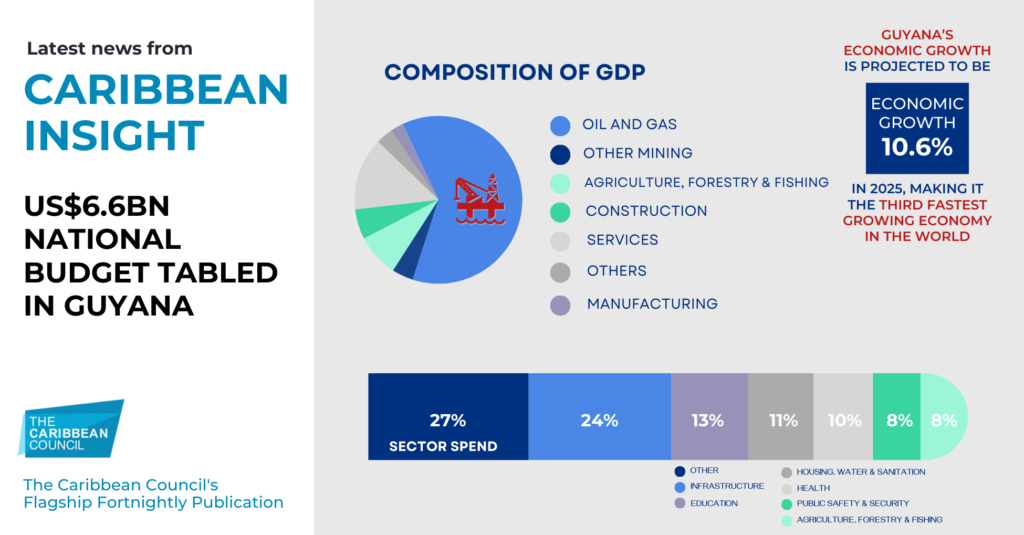
10 January 2025
The Dominican Republic is poised to embark on an ambitious development agenda in 2025, with the government authorised to secure over US$6.5bn in international financing.
This decision, embedded in Article 71 of the 2025 National Budget, signals a significant commitment to addressing critical needs in transportation, water, sanitation, energy, and education through the implementation of 37 major infrastructure projects.
The budget, approved as law by the Senate, includes a bold financing strategy that paves the way for the executive branch, through the Ministry of Finance, to accelerate the rate of borrowing from international organisations in 2025.
The financing strategy relies on partnerships with international financial institutions, including the Inter-American Development Bank (IDB), the Japan International Cooperation Agency (JICA), the Spanish Agency for International Development Cooperation (AECID), the Andean Development Corporation (CAF), and the Central American Bank for Economic Integration (CABEI).
Among these, a US$500mn loan is earmarked for the construction of a monorail in Santiago de los Caballeros, while US$371.5mn will fund the expansion of Santo Domingo’s Metro Line 2.
Other significant projects requiring financing include the construction of additional sections of the border fence with Haiti which is estimated to cost US$239.9mn, and the country’s nationwide bridge rehabilitation and maintenance programme estimated at US$200mn, to be executed with support from the IDB.
The heavily touted National Plan for Connectivity and Transformation of Road Infrastructure (Planacovial) is also expected to move forward once the government can secure the required US$600mn investment which is being negotiated with CABEI.
All loans and financing must be negotiated at market-compatible interest rates and fees applicable to the Dominican Republic, with a minimum repayment term of seven years.
This aggressive borrowing strategy comes amid significant growth in the Dominican Republic’s public debt. As of November 2024, the Non-Financial Public Sector (NFPS) debt reached US$57.48bn, up from US$30.7bn in 2020. External debt accounts for 70.4% of this total, equivalent to US$40.43bn.
The rising indebtedness reflects increased reliance on international markets. Private creditors, mainly through bond issuance, have grown their share of external debt from US$22.16bn (72.2%) in 2020 to US$31.04bn (76.8%) in 2024. Meanwhile, multilateral organisations like the IDB and World Bank remain significant players, albeit with a shift in their relative contributions. The IDB’s share declined from 13.4% of total external debt in 2020 to 9.8% in 2024, while the World Bank’s increased from 3.8% to 4.8% during the same period.
Despite the ballooning debt, the debt-to-GDP ratio dropped from 56.6% in 2020 to 46.1% in 2024, driven by robust economic growth. However, experts warn of vulnerabilities associated with the heavy reliance on international private financing.
“The increase in external debt, especially through bond issuance, suggests a greater dependence on international private financing,” observed El Caribe financial writer, Martín Polanco, adding that “although this allows for diversifying the sources of resources, it also increases the country’s exposure to the risks associated with global interest rates and market volatility.”
The 2025 budget reflects President Luis Abinader’s focus on infrastructure, but critics argue it continues a longstanding trend of prioritising current spending. The administration has followed the precedent set by previous governments, dedicating the majority of revenues to current expenditures, including significant increases in public sector employment, employee benefits, and interest payments on existing debt.
This fiscal strategy has sparked debate about the balance between investment and sustainability. While supporters highlight the transformative potential of these projects, detractors raise concerns about the long-term implications of increased debt servicing costs.
The Dominican Republic’s ambitious borrowing and development plans aim to propel the nation’s infrastructure into a new era of modernisation. As the government navigates the complexities of securing and managing these funds, it faces the dual challenge of fostering growth while safeguarding fiscal stability. With US$6.5bn on the line, the year ahead will test the administration’s ability to execute its vision effectively.
